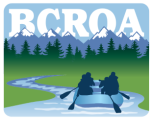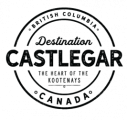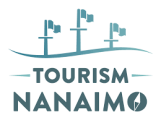Single Itineary
One of Vancouver Island's most scenic estuaries
The Courtenay River Estuary is one of the most ecologically rich and scenic estuaries on Vancouver Island. The paddling here is easy to access and offers calm waters, making it ideal for kayaks, canoes, and stand-up paddleboards. Launch points are close to town, yet within minutes you feel immersed in a quiet, natural world. Whether you’re gliding through mirror-like water at sunrise or watching the tide shift through the salt marshes, the estuary offers a paddling experience that is both relaxing and deeply connected to nature. And the scenery is breathtaking: lush tidal marshes, mountain backdrops, and wide-open skies create a serene environment. Bald eagles, herons, seals, and a variety of migratory birds are commonly seen, offering exceptional wildlife viewing, especially during spring and fall migrations. The estuary is especially unique for its blend of freshwater and saltwater ecosystems which support an incredible diversity of life. Rich eelgrass beds and mudflats are vital nurseries for salmon and other marine species.
The area also holds cultural and historical importance for the K’ómoks First Nation. The estuary was, and remains, a vital source of food, transportation, and spiritual connection. Its rich ecosystems supported traditional harvesting of salmon, shellfish, seaweed, and other marine life, and numerous archaeological sites in the region speak to a long-standing relationship between people and place.
With European settlement in the 19th century, the estuary saw dramatic change. Logging, agriculture, and urban development altered its natural flow and degraded habitat. Yet, even as the land was reshaped, the estuary remained central to the region’s economy and identity. The Courtenay River became a key transportation route, and the surrounding marshlands supported farming and industry.
In recent decades, growing awareness of the estuary’s ecological value has spurred conservation efforts. Today, it is recognized as one of the most important estuaries on Vancouver Island for biodiversity. It supports migratory birds, endangered species, and acts as a critical nursery for salmon.
As both a historical and ecological treasure, the Courtenay River Estuary serves as a powerful reminder of the connections between land, water, and people—past, present, and future.
Hazards:
Mudflats that dry out at low tides
Large mudflats are exposed when tidal heights drop below 2.4 m. These flats can leave paddlers stranded on either side. Channels shrink, water becomes shallow or disappears, and navigation becomes difficult or impossible until the tide returns.Strong tidal currents and flow reversal
As freshwater from the rivers meets the tidal inflow from the sea, currents can shift direction, strengthen or weaken rapidly. Particularly near the mouth of the estuary and in the main river channel, currents can make paddling upstream hard, and downstream fast when the tide is going out.Obstructions / logs (strainers), snags and entangled gear
There are logs, tree debris and other obstructions in the water — submerged or floating — especially near the channel margins.Shallow water & grounding risk
Outside main channels, water can be quite shallow even at moderate tides. Large finned boards or kayaks can hit bottom, scrape, or get stuck, damaging craft or delaying progress.Changing weather, wind & chop
Open estuarine areas (especially nearer the harbour or Comox Bay) are exposed to wind; even small winds can generate uncomfortable chop. Weather changes can worsen conditions quickly.Limited visibility & navigational confusion
Low tide exposes large expanses of flat mud or marsh; channels become narrow and can shift or be obscured. It can be hard to judge where the navigable water is (especially in cloudy/light‑drag condition or late in the day). Mistakes may lead to running aground.Environmental sensitivity / habitat conflicts
Some parts are important for wildlife: eelgrass beds, bird nesting/feeding areas, sensitive saltmarsh. Paddlers straying off designated channels may damage habitat or violate local restrictions. Marked sensitive areas (fenced or cordoned marsh grass) exist.
Courtenay River Estuary
Paddle pros
Here are the experts who will help perfect your paddling trip.

Coast Surf Shop
Coast Surf Shop is a family-owned store in Comox and Cumberland, B.C., offering surf, paddle boards, rentals, lessons, and tours since 2012.
Learn More
Comox Valley Kayaks & Canoes
Comox Valley Kayaks & Canoes offers top-quality kayaks, canoes, and SUPs, along with rentals, lessons, and guided tours for all skill levels.
Learn More
Comox Valley Paddlers Club
Comox Valley Paddlers Club offers paddling trips, education, resources, and memberships for all levels.
Learn More
Compass Adventure
Compass Adventure offers a variety of ocean activities, rentals, lessons, and programs for all ages.
Learn More
Destination Desolation
Destination Desolation offers custom tours and shuttle services to explore Desolation Sound & surrounding islands.
Learn More
Surfside Paddle Sports
Surfside Paddlesports offers top-quality kayaks and surf skis for paddling enthusiasts. Book a demo now!
Learn More
West Coast Water Sports
Rent kayaks, canoes, or SUP boards from West Coast Water Sports. Fun for all skill levels!
Learn MoreExplore more in this community.
Every corner of BC has something unique to offer. From freshwater lakes on Vancouver Island to rafting on the whitewater of Squamish, you will never find a shortage of amazing paddling.


































